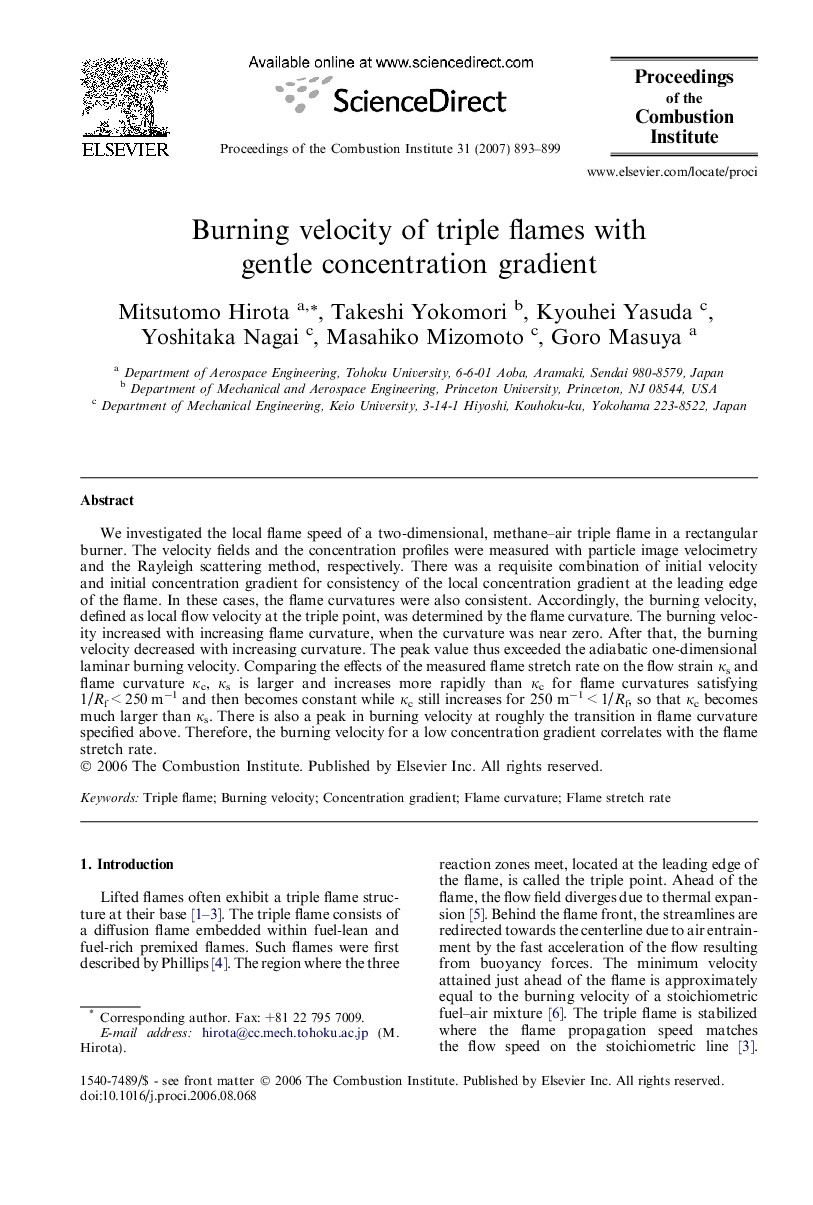| Article ID | Journal | Published Year | Pages | File Type |
|---|---|---|---|---|
| 240798 | Proceedings of the Combustion Institute | 2007 | 7 Pages |
We investigated the local flame speed of a two-dimensional, methane–air triple flame in a rectangular burner. The velocity fields and the concentration profiles were measured with particle image velocimetry and the Rayleigh scattering method, respectively. There was a requisite combination of initial velocity and initial concentration gradient for consistency of the local concentration gradient at the leading edge of the flame. In these cases, the flame curvatures were also consistent. Accordingly, the burning velocity, defined as local flow velocity at the triple point, was determined by the flame curvature. The burning velocity increased with increasing flame curvature, when the curvature was near zero. After that, the burning velocity decreased with increasing curvature. The peak value thus exceeded the adiabatic one-dimensional laminar burning velocity. Comparing the effects of the measured flame stretch rate on the flow strain κs and flame curvature κc, κs is larger and increases more rapidly than κc for flame curvatures satisfying 1/Rf < 250 m−1 and then becomes constant while κc still increases for 250 m−1 < 1/Rf, so that κc becomes much larger than κs. There is also a peak in burning velocity at roughly the transition in flame curvature specified above. Therefore, the burning velocity for a low concentration gradient correlates with the flame stretch rate.
